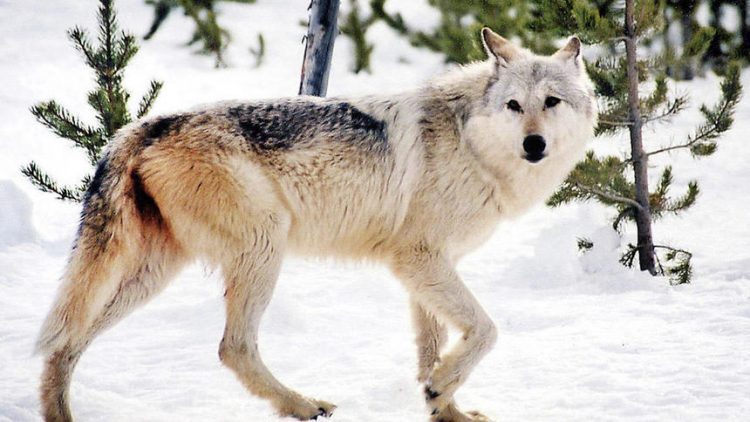
Bucking the Trend in Wolf-Dog Hybridization: First Evidence from Europe of Hybridization between Female Dogs and Male Wolves
Abstract
Studies on hybridization have proved critical for understanding key evolutionary processes such as speciation and adaptation. However, from the perspective of conservation, hybridization poses a concern, as it can threaten the integrity and fitness of many wild species, including canids. As a result of habitat fragmentation and extensive hunting pressure, gray wolf (Canis lupus) populations have declined dramatically in Europe and elsewhere during recent centuries. Small and fragmented populations have persisted, but often only in the presence of large numbers of dogs, which increase the potential for hybridization and introgression to deleteriously affect wolf populations. Here, we demonstrate hybridization between wolf and dog populations in Estonia and Latvia, and the role of both genders in the hybridization process, using combined analysis of maternal, paternal and biparental genetic markers. Eight animals exhibiting unusual external characteristics for wolves – six from Estonia and two from Latvia – proved to be wolf-dog hybrids. However, one of the hybridization events was extraordinary. Previous field observations and genetic studies have indicated that mating between wolves and dogs is sexually asymmetrical, occurring predominantly between female wolves and male dogs. While this was also the case among the Estonian hybrids, our data revealed the existence of dog mitochondrial genomes in the Latvian hybrids and, together with Y chromosome and autosomal microsatellite data, thus provided the first evidence from Europe of mating between male wolves and female dogs. We discuss patterns of sexual asymmetry in wolf-dog hybridization.
Introduction
The steady growth of human populations worldwide has resulted in the expansion of human-occupied territory, a decrease in suitable habitats for wildlife, and closer proximity between humans and wild animals. These trends, coupled with the increasing number of domesticated animals accompanying humans, mean that the potential for hybridization between wild and closely related domestic animals is increasing, which is especially relevant for domesticated dogs and wild canids.
There is growing evidence that many animal species can hybridize: current estimates indicate that at least 6% of European mammal species undergo some degree of hybridization [1]. Usually, the incidence of hybridization is believed to be low and its population level impact minor; however, where introgression occurs, a significant number of maladapted genetic variants can enter parental populations and may even drive species to extinction [2]. Hybridization yielding viable offspring can occur between all species in the genus Canis [3], indicating incomplete reproductive isolation. Moreover, hybridization coupled with subsequent introgression is a documented threat to a number of canids, including the Ethiopian wolf (Canis simensis) [4], the red wolf (C. rufus) [5], [6] and the dingo (C. lupus dingo) [7]. As a result of extensive hunting pressure and habitat loss during recent centuries, certain gray wolf (Canis lupus, subsequently referred to as ‚wolf’) populations in Europe and elsewhere have dramatically decreased in size and have become increasingly fragmented. Remaining populations are also exposed to increasing numbers of humans and dogs [8]. Phylogenetic studies place dogs and wolves as sister taxa (e.g. [9]), and there is abundant evidence that dogs are a domesticated form of wolf (e.g. [10], [11]). Gray wolves and domestic dogs possess identical karyotypes and can hybridize to produce fertile offspring in the wild [12], [13]. The main conservation concern related to hybridization between wolves and domestic dogs is the significant reduction or loss of specific adaptations that could lead to the extinction of already small and fragmented wolf populations if introgression is sufficiently frequent. Therefore, monitoring genetic diversity [14], identifying the degree of hybridization and the role of females and males of both species in the hybridization process, as well as assessing the impact of hybridization on parental populations are all crucial steps for wolf conservation.
